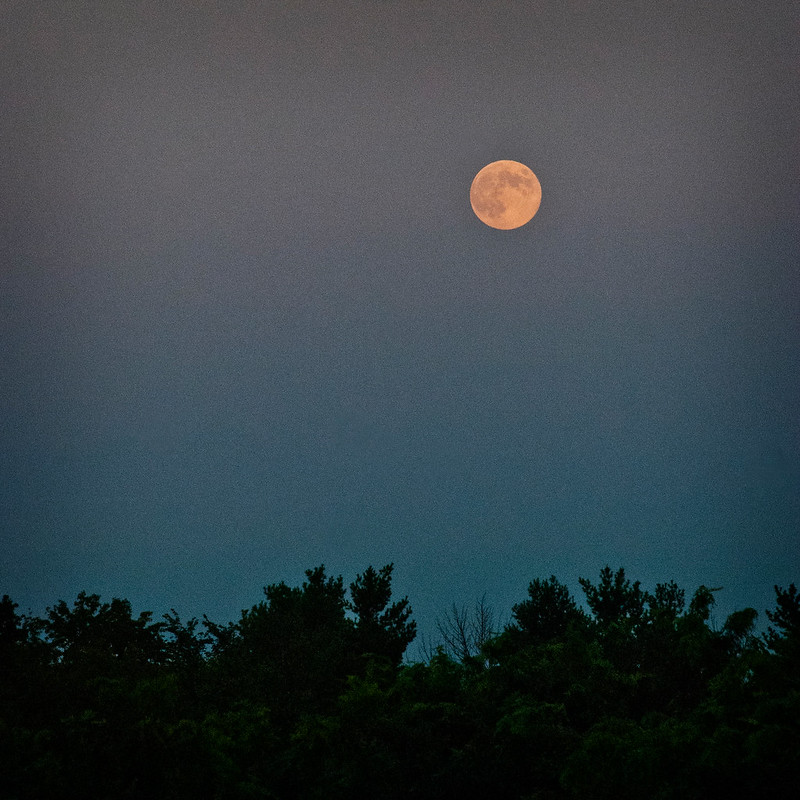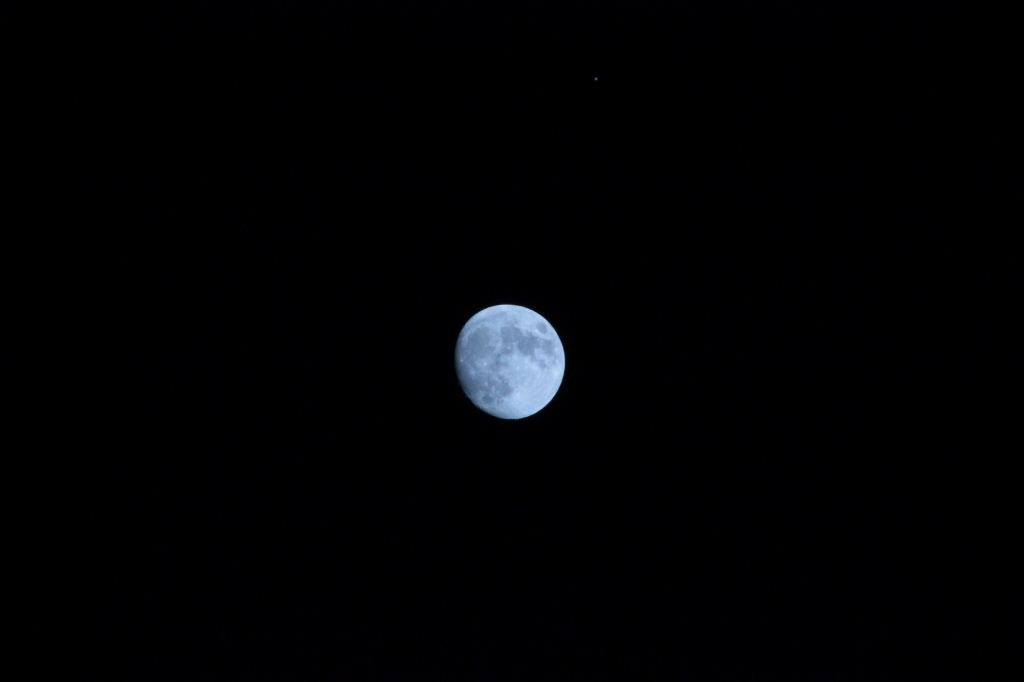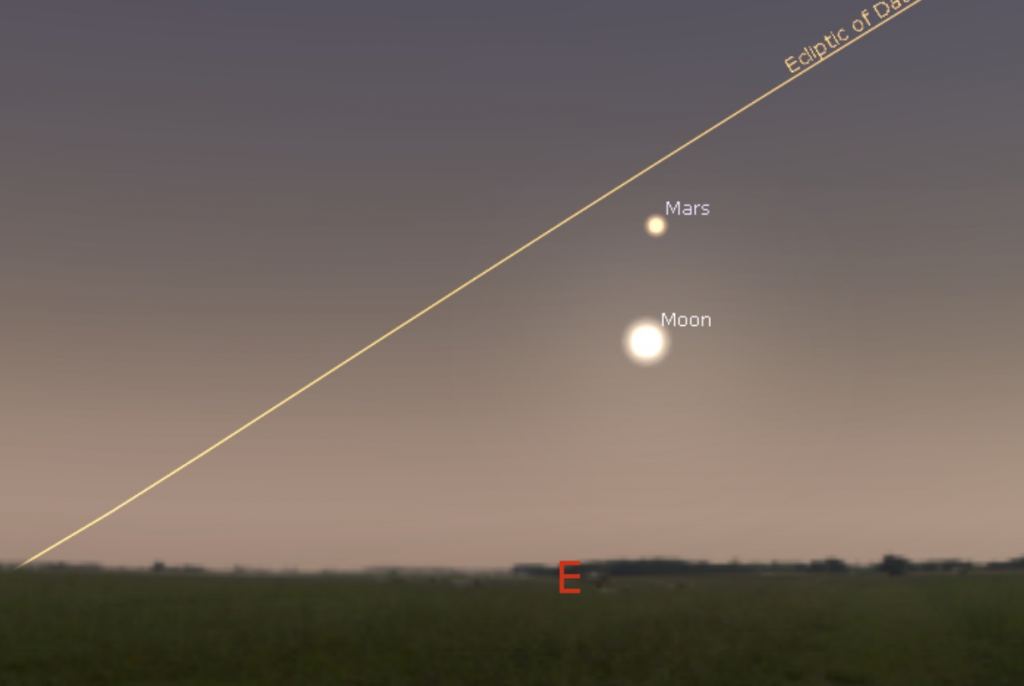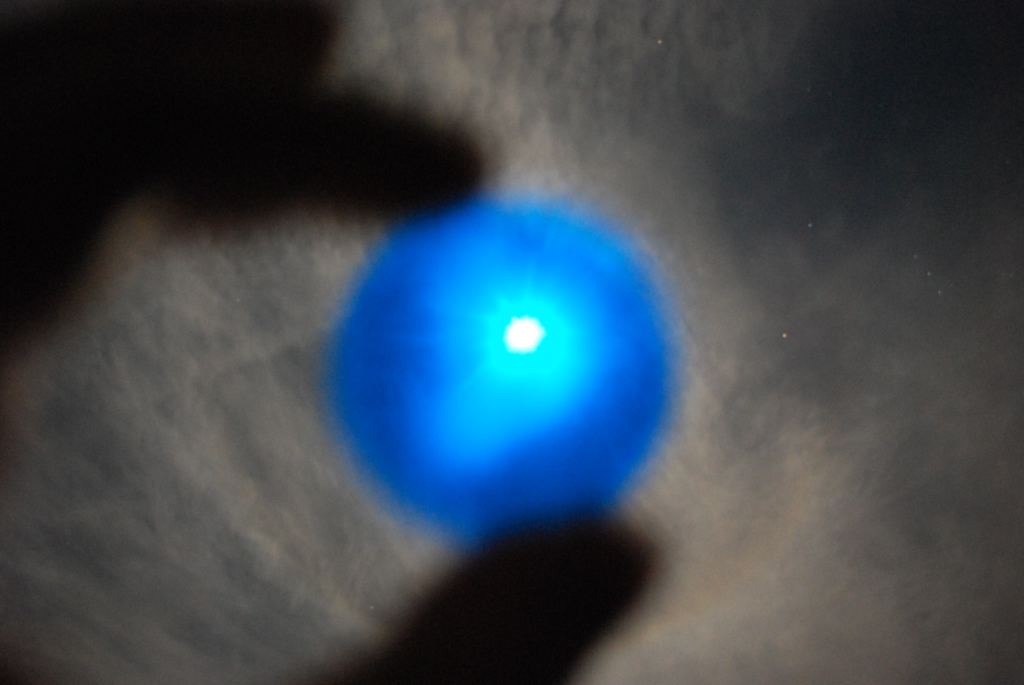The final Blue Moon of the decade this weekend rounds out October 2020.
Halloween. It’s not only a great time to dress up in ghoulish garb going from house to house, but a great time for some (in 2020, socially-distanced) sidewalk astronomy. This year also offers up a special trick-or-treat event, as the second Full Moon of October falls on the very last day of the month.
Why the Blue Moon
Of course, the Moon won’t actually appear ‘blue’ on the evening of Halloween, October 31st. This curious astronomy meme comes to us via a series of astronomical errors over the years, that has worked its way into the modern observer’s lexicon.
The error traces its way back to an article in the March 1946 edition of Sky & Telescope magazine, which described a ‘Blue Moon’ as the second Full Moon in a month with two. Now, an old-timey archaic definition for a Blue Moon is the much more convoluted definition of ‘the third Full Moon in an astronomical season (such as from an equinox to solstice, and vice versa) with four.’ I know. It’s a bizarre rule. Legend has it that this rule arose from the now defunct Maine Farmer’s Almanac, which denoted that third spurious Moon in blue instead of black ink. This assertion remains unverified… if anyone has any stacks of the Maine Farmer’s Almanac laying around in the attic, it might be worth checking ’em out to see if this is indeed true.
Sky and Telescope wrote a deep dive article into the story behind the Blue Moon in 2006, but by that time, the damage had been done. Like so many modern memes with little or no basis in reality, the Internet breathed new life into the idea that a Blue Moon is the second Full Moon in a month with two. Of course, this is to the consternation of professional astronomers, who never actually sit around in observatories at night discussing the Blue Moon.

How rare is ‘once in a Blue Moon?’ not very… a synodic period (the span from one similar phase to the next) is 29.5 days, shorter than every month except February. On average, we get a Blue Moon once every 2-3 years. A Blue Halloween Moon is slightly rarer: the last one occurred on 1974 and the next one happens in 2039.
If that 19 year period (2039-2020) sounds familiar, it’s because it’s also what’s known as the Metonic cycle. 235 Synodic periods very nearly equals 19 years, meaning that if the Full Moon fell on a certain calendar date, it will almost always fall on the same date 19 years hence. We say ‘almost always,’ as one Metonic period is just 2 hours, 3 minutes and 50 seconds off from 19 years… that’s why the 2001 Full Moon juuust missed Halloween, and instead fell on November 1st.
Can a Moon really appear Blue? Yes, and it doesn’t even have to be Full to do it. The Moon took on just such a strange cast on September 23rd, 1950 as seen over eastern North America, due to muskeg fires in western Canada.

Another relating term that’s gaining traction ‘round the web is a Black Moon, or the 2nd New Moon in a month, also sometimes used to refer to a February without a New or Full Moon.
This is also the last Blue Moon for the decade… Here’s list of Moons (Black and Blue) for the coming decade:

The waxing gibbous Moon also passes 2.7 degrees south of -2.3 magnitude Mars on the evening of October 29th, still shinning bright after its fine opposition earlier this month. Can you see Mars in the daytime before sunset, using the Moon as a guide?

The Moon also reaches apogee on October 30th just 20 hours prior to Full. This is also the most distant Full Moon for 2020, heralding the Supermoon’s antithesis, the ‘Minimoon.’ Finally, this weekend’s Full Moon is also the Hunter’s Moon for 2020, as the first Full Moon of October fell nearest to the September Equinox, and took the title of the Harvest Moon for 2020.
Now, what’s truly rare is a Halloween total lunar eclipse. The last one was waaay back in 1175 AD, and the next one won’t occur until – mark your calendars – 2897 AD. Should we instead say “once in a ‘Blue Blood Moon?'”
Halloween itself also has an astronomical tie-in, as it’s a cross-quarter tie-in day, approximately midway between a solstice and an equinox. In 2020, the technical mid-point between the September Equinox on September 22nd and the December Solstice on December 21st actually falls on November 6th, nearly a full week after Halloween. Halloween is derived from the older Celtic festival of Samhain, and is proceeded on November 1st by All Saints Day. The other three cross-quarter tie in festivals are Groundhog’s Day (February 2nd), May Day (May 1st) and the most obscure one for modern times, Lammas Day (August 1st).
…and speaking of archaic rituals, if you live in North America (excepting most of Arizona, Saskatchewan, and parts of British Columbia and Nunavut in Canada) don’t forget to ‘fall back’ one hour on Sunday, November 1st. With the first Sunday of November falling on the 1st in 2020, this is the earliest we can fall back to Standard Time.

Does it really matter? To be sure, Black and Blue Moons are mere abstract concepts, anomalies created by two calendrical cycles resulting in a mathematical curiosity with little observational or scientific significance… but the curious tale of how the meme came to be is a strange historical aside to modern astronomy.
I say, let’s use the non-event of a Halloween Blue Moon to get eyes out sky watching, and checking out a fine Full Moon weekend.
Lead image: More fun with white balance, to produce a ‘Warhol Moon’ composition. Credit: Dave Dickinson.


Come on, who actually counts decades like that? You can safely call it the first blue moon of the twenties and I guarantee you no rational person will argue with you. ?
Awesome post Dave. As usual.
You’d be surprised. The discussion of ‘is 2020 the first or last year of the decade?’ came ’round at the end of 2019, and will probably start up again soon.
I mean, it’s not technically wrong, but only if decades are being referred to ordinally (e.g. 202nd decade) – I have literally never heard anyone do that. Just as 1990 was the first year of the 90s, 2020 is the first decade of the 20s (note that I’m skipping over the two decades in between because we still don’t have a neatly agreed upon name for them).
xkcd covered this pretty succinctly: https://xkcd.com/2249/
And of course, by “first decade of the 20s”, I mean “first year of the 20s” (although sometimes it has felt like a decade of its own).